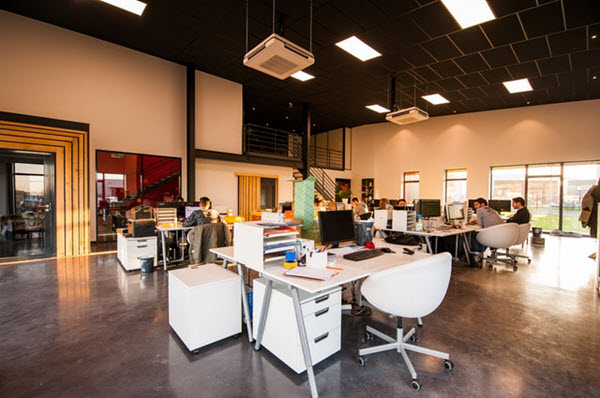As technological innovations continue to change the nature of work, business owners and professionals work on creating a space that encourages productivity and business prosperity. To this day, many businesses continue to experiment and push the limits on what a productive office design should be like.
But where can success be found?
As the old saying goes, those who do not learn history are doomed to repeat it.
We are led to believe that workspaces aren’t always like this: rows of cubicles or desks containing computers connected in an open space. However, the open office setups and co-working spaces aren’t as new as we think.
The Evolution and History of Office Design

In the 1950s, open offices were at the height of popularity. It’s attributed to “management experts” like Frederick Taylor who provided insights to companies from the late 19th century to the beginning of the 20th century.
However, despite initial intentions to create a workspace that promotes collaboration and exchange of ideas, these office spaces only served to fit as many employees possible. This layout, with its shared long tables filled at max capacity, was reminiscent of factory lines. It made it easier to see who was doing their job and who was slacking.
From this, German professionals began experimenting with office design. They came up with the first flexible office layout. The result was Bürolandschaft or “Office Landscape”, which allowed for accommodating privacy and solo work. It was flexible enough for collaboration. While this movement did not quite take off, cubicles were created to try to capture this duality of space.
Unfortunately, this gave rise to the “cube farm” phenomenon in the 1970s. It featured rows upon rows of identical cubicles, defeating the purpose of its flexibility. However, this privacy allowed employees to express themselves and personalize their workspace. It was also in this period that computers started seeing use in the workplace, taking up roomfuls of space.
See Also: One Size Doesn’t Fit All: How Office Space Caters To Each Stage Of A Business Journey
Adapting to Technology
Technology further pushed the changes in office design, as the workforce move from the large and clunky computers of the 1980s to cellular phones in the 1990s and accessible internet connection of 2000s.
The employees’ means of working became more compact. It gave way to the shift from bulky equipment housed in equally cumbersome office spaces to open and co-working offices with more ergonomic features. The 2000s were also a time when home offices became feasible. As long as you had a stable internet connection, you can get work done. It gave back the sense of flexibility and mobility to workers.
At the forefront of this decade, tech offices are redefining workspaces by putting the employee’s well-being at the core of their changes. Remote work and home-based jobs have taken off, given that tasks can be completed through laptops and digital collaboration tools.
Tech giants, like Google and Apple, have designed their offices to allow employees to engage in non-work activities. It helps improve their work-life balance. The open office plan, on the other hand, affects productivity positively.
Tailor-fitting the Workspace Based on Your Employees’ Needs
Companies are more informed now. They now know that the key to making office spaces effective is identifying what is needed from a workspace.
An ideal workspace prioritizes opportunities for workers to connect and collaborate. It strikes a balance between open collaboration and privacy and stimulates creative thinking. These ideals should be grounded in the reality of the space: size, the overall flow of the design, energy consumption, brand image, and, most importantly, company culture.
A common error is to simply copy an office design without taking into consideration your company’s unique culture and needs. It’s a costly renovation that’s just not worth it. When executed correctly, a modern ideal workspace can make all the difference in attracting potential employees. It can help in keeping existing ones around, too.
Your business stands to see an increase in wellness, productivity, reinforcement of company culture and values, more flexible working options, a chance for employees to interact and build relationships, and a good impression on possible clients and business partners.
At the end of the day, while tech continues to drive the changes we make to our working spaces, we need to remember what these changes should really be about. We need to learn more about the history of office design.
Any great space is a waste if the interests of your employees, and to an extent, your business, is not aligned with it.
See Also: 10 Things That Are Essential For A Great Office Environment